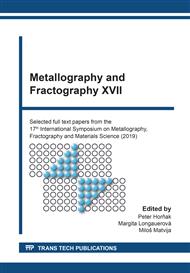p.80
p.86
p.92
p.100
p.109
p.115
p.121
p.127
p.133
Inclusion Engineering in Structural Steels with Enhanced Machinability
Abstract:
In the first part of this paper inclusion morphology and factors influencing machinability of structural steels are shortly discussed. In the experimental part of this work the effect of calcium addition on the inclusion morphology transformation and the machinability Bindex (according to Volvo standard) for several grades of structural steels are presented.
Info:
Periodical:
Pages:
109-114
Citation:
Online since:
November 2020
Authors:
Price:
Сopyright:
© 2020 Trans Tech Publications Ltd. All Rights Reserved
Share:
Citation:


